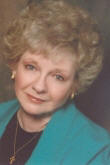BJH: Icons in Fiction

An element found in fiction that’s not often discussed is the icon. I’m not referring to the small images we use to decorate desktops or to provide shortcuts to software programs, nor to religious symbols. The icon I’m thinking of is an object or a motif in novels that occurs repeatedly. It's similar to a recurrent theme in music, but not quite the same in fiction.
Especially in series fiction, an icon can provide an element around which several continuing stories are developed. For example: in my Emerald Ballad series, the Kavanagh harp (the "Harp of Caomhanach") represents an ancient covenant between the Kavanagh family and God that was established when a clan chief decreed that the harp was to remain silent in times of exile, that it should "sing only for a free people." The harp is passed down from one generation to another and appears in the Prologue of each book of the series. It seldom makes an appearance, other than in the Prologues--and yet it provides a kind of "symbol" for generations of the Kavanagh family. There’s actually more than one harp in the Ballad series: Morgan Fitzgerald, the "anchor" of the entire series, often plays a small minstrel’s harp. But that particular harp isn’t an icon--it simply defines a part of Morgan’s character and personality.
Another example: in my American Anthem books, the icon is actually the musical suite Michael Emmanuel is composing--the "American Anthem"--and represents not only the significant commission given by God to the composer, but also the idea of the diversity among Americans of all races, nationalities, and walks of life. When the suite is finally performed, it also serves as the finale of the series...and the prelude to the future of the series characters.
In both Cloth of Heaven and Ashes and Lace, the Claddagh itself and a Claddagh ring are icons. It’s no accident that they appear on the covers and were used in the marketing of the novels.
In my novella, The Penny Whistle, the story of which has been much expanded and appears in A Distant Music, the icon is the penny whistle itself. It represents the need...and the power...of God-given hope in an individual’s life--and in the life of an entire community.
Use of the icon is a device I often employ in my fiction because it somehow seems to bring a meaningful symbol of continuity, cohesion, and endurance to a book or to a series. The icon can reflect tradition, custom, aspiration, and even romance. It can represent faith or hope or steadfastness. Sometimes an icon can be a landmark: a mountain, a river, a carousel, even a town. Musical instruments, family Bibles, pieces of jewelry, such as watches or rings, artifacts, and other enduring items are only some of the objects that appear as icons in fiction.
A savvy marketing department will often pick up on the icons in a work and use them in cover art, packaging and publicity. Icons also make good topics to raise in interviews or teaching discussions.
The next time you’re reading a favorite author’s work, especially if you’re caught up in a continuing series, try looking for icons used and think about what they might represent. And look for new icons you can use in new ways in your own fiction.
One more thing--it’s a good idea to mention the icon (or icons) you’ve used and their significance--to your editor and the marketing folks. Make them aware well ahead of time of any symbol or object on which they may be able to hang some of the promotion and marketing of your work, so they can plan accordingly.
BJ Hoff loves music and novels, family, friends, and Golden Retrievers. Visit her web pages at http://www.bjhoff.com/ and http://www.bjhoffgracenotes.typepad.com.



3 Comments:
What a great post. You just gave sinew and skin to the bones of an idea that had been forming in my mind, concerning a new novel I'm writing. Thank you, thank you, thank you.
You've sparked some ideas. Thanks, B.J.
I love the idea of an icon. I have used a tree in a musical I wrote. I also love how it ties into our church history, how icons were used in cathedrals to visually express an element of faith.
Post a Comment
<< Home